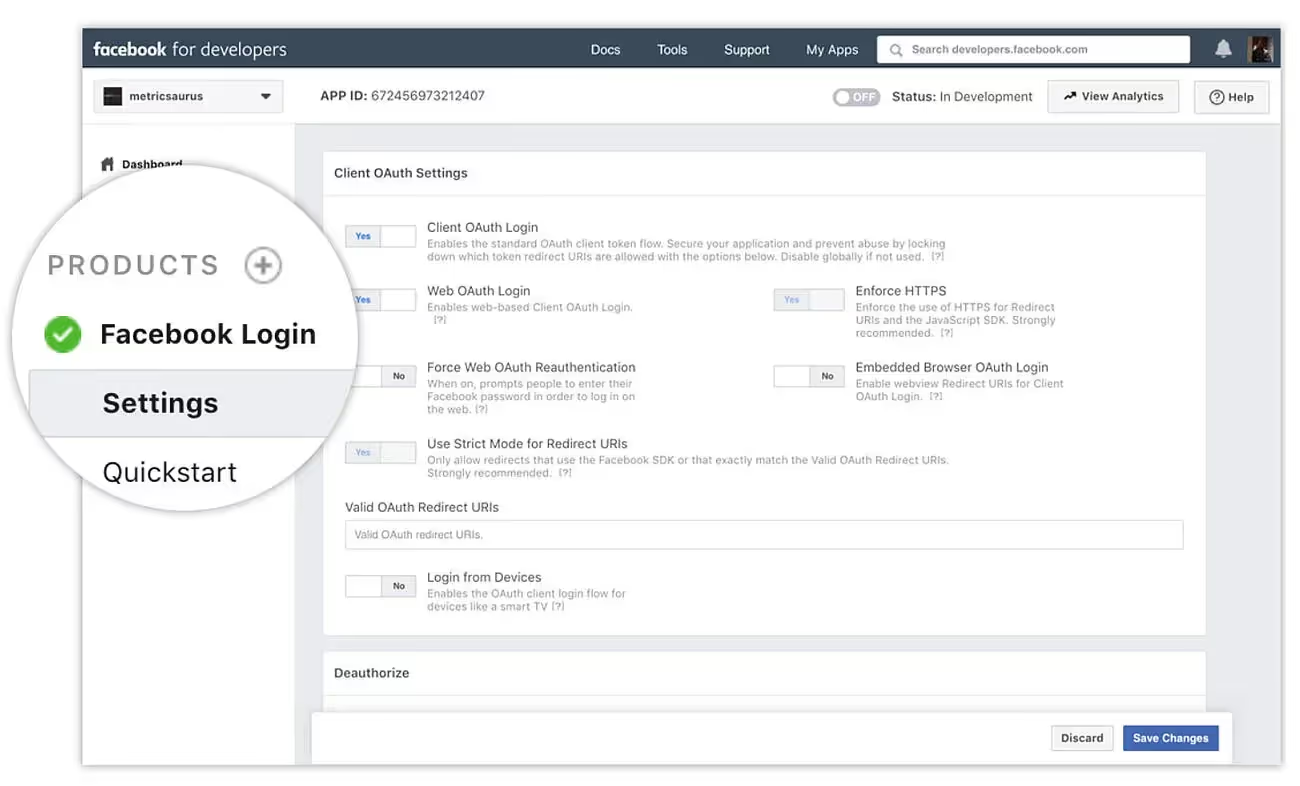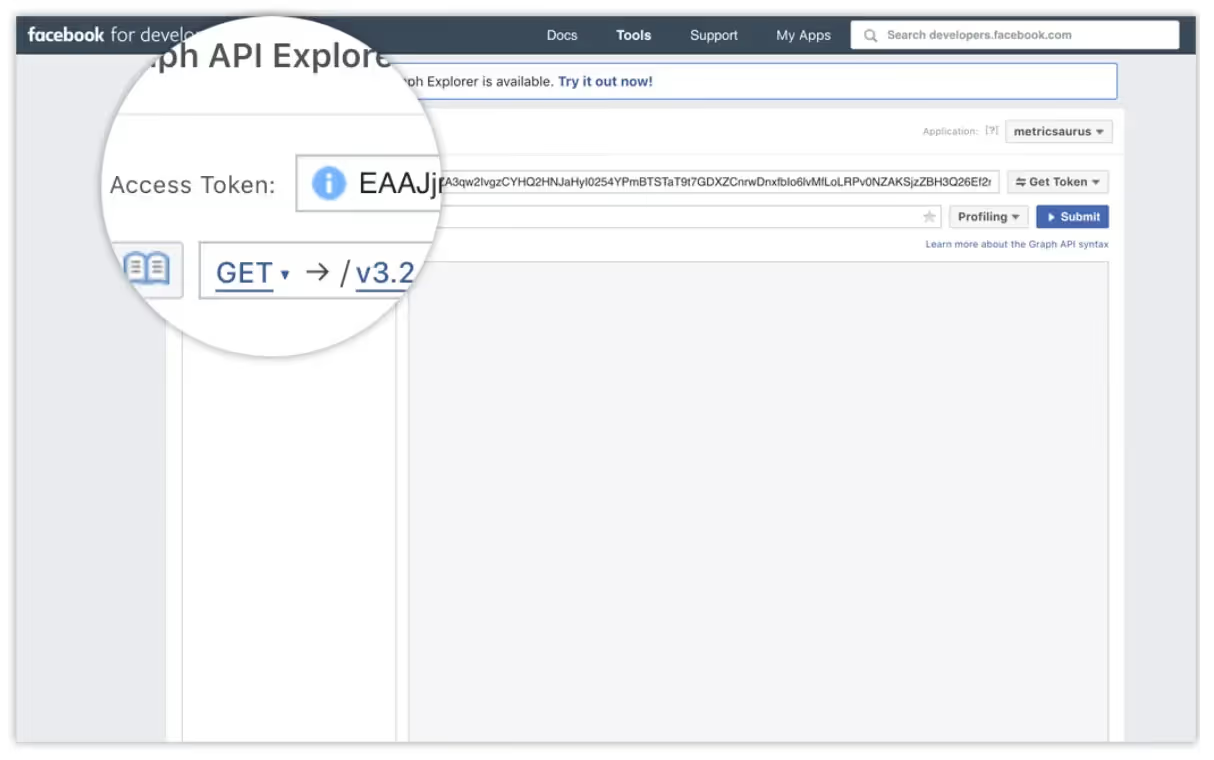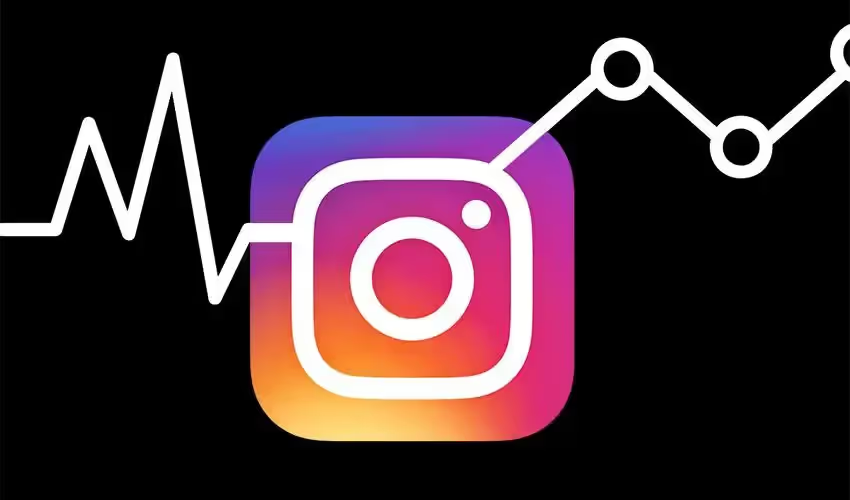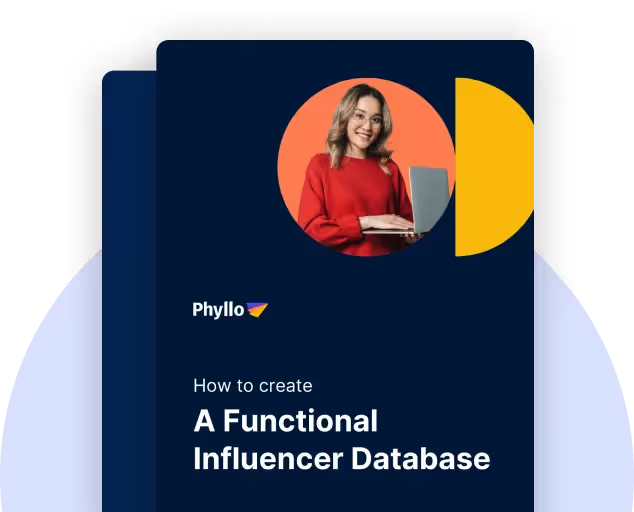Social media is indispensable to modern marketing efforts, and it is impossible to talk about social media without mentioning the Instagram app and its capabilities. As the fourth most widely used social media platform and clocking in 4.25 billion user visits in a month, your business is missing out on many potential customers if you aren’t actively promoting or selling on Instagram.

However, effective selling requires a comprehensive understanding of your audience—who they are, their likes and dislikes, and most importantly, their problems in daily life, which your products are best suited to solve.
Now, your developers can optimize your product, but only if they have the data that tells them more about your customer's needs and wants in the future.
This is where the Instagram API comes in to revolutionize your marketing strategies.
Instagram Basic Display API
Instagram had initially developed a Instagram basic display API. However, they closed it in 2018 to protect user privacy and released the Graph API instead. It was a move to ensure data security and encourage only “serious” businesses and creators to grow their community and create unique products and apps to help their audience.

Since the Graph API was meant to be an improvement over the basic Display API, developers at Instagram also made it difficult to access API for anyone—this means you now need a developer with real skills to access Instagram API integrations.
However, it is worth making the extra effort since the use cases of the Instagram API show that it is essential for creators and businesses to collaborate with them for influencer marketing.

Importance Of Instagram Graph API In Influencer Marketing
The Instagram API is becoming increasingly relevant for companies investing in and powering their growth through influencer marketing. For these businesses, the Instagram API could mean collaborating with a fake influencer or partnering with a real influencer.
This is because one of the Instagram API's major functions is extracting legitimate insights from the social media profiles of influencers. The Instagram API can easily monitor competition information, hashtag usage, mentions, and profile performance, thus enabling you to refine your social media strategy and truly understand your audience using big data.
It is not always easy to identify fake influencers who have bought their audience members with money—but data doesn’t lie! The Instagram API can ensure that your business invests in the right influencer whose followers can actually translate into your customers.

Using Instagram API authentication, businesses can gain knowledge about an influencer's followers, such as their demographics and psychographics, including their online browsing behaviors, to ensure they focus on promoting themselves to potential customers.
Moreover, the Graph API can draw out accurate metrics that organizations can use to gauge the effectiveness of their influencer marketing initiatives, including impressions, reach, and overall interactions, as well as engagement rates for sponsored posts. You simply need an Instagram app ID to do this.
However, you cannot access influencer data without them giving you permission by linking their account to your app or website through the API. For this purpose, you must clearly communicate with them how you plan to use the data extracted from their profiles and assure them about privacy concerns.
Uses of Instagram API
The list given below covers seven functions you can perform with the Instagram Graph API:
1. Gather business insights
The Instagram Graph API allows you to pull mentions of your business from anywhere on the platform.
It could be a post where your customer detailed what they like about your product or a story that simply shows someone using your product, but maybe incorrectly.
The first scenario will act as a robust testimonial for your offering, while the second one can inspire solutions from your brand on how to maximize the usefulness of your product to help potential customers achieve their desired results.
Check out Insights for more information.
2. Build your audience
Instead of using bots to engage and connect with Instagram accounts based on the hashtags they use or follow, you can use the Instagram Graph API to manually scour for influencers and even regular users who can promote your brand to their followers.
These people must have their own audience base, engage with your business online regularly, and be geographically placed right to help you maximize your impact. These users will be the best positioned to promote your business and increase your audience base.
Check out Insights and Mentions for further applications.
3. Create sponsored campaigns
If you host a giveaway or any other regular contest that asks users to post pictures of them using your product on Instagram with a specific hashtag, you can then implement the Instagram API to extract all the photos based on the hashtag mentions and feature the winning pictures on your feed, app, and website.
This allows you to not only increase brand engagement, but also gain a multitude of product pictures and user-generated content that you can feature on your app, website, and other social media channels throughout the year!
Check out Hashtag Search for more information.
4. Moderate comments
The Instagram API enables you to filter comments on your Instagram Business profile with more advanced tools. You can utilize it to disable or enable comments, hide or unhide or even delete them, retrieve replies to a comment, and ultimately, reply to them.
If you employ the Instagram API, you no longer need to use the Instagram app to verify that your comments accurately represent your brand.
Check out Comment Moderation for further applications.
5. Extract social proof from hashtags
The Instagram API can extract data from hashtags and help you assess which ones perform best by evaluating them based on how large an audience they attract or how frequently users mention or engage with them.
You can also extract relevant brand images using hashtag search to promote your social media channels on your app or website. These provide social proof and help your brand attract more qualified leads.
The Graph API also helps you evaluate your competitors’ hashtags for performance, lending you a direct view of their strategies and allowing you to refine yours. This is an Instagram app secret tactic you can maximize for your benefit!
Check out Hashtag Search for more information.
6. Track event or campaign performance
Since the Graph API allows you to pull insights from hashtags, mentions, and geotags, you can track the audience's response to any of your marketing events or campaigns.
You can derive real-time impressions on how your audience responds to a marketing campaign based on the pictures and stories they post, and even optimize an event experience to garner better reactions and higher brand engagement.
Check out Insights and Hashtag Search for further applications.
7. Monitor industry trends both locally and globally
When targeting users based on geographic locations, it is important to gauge the popular trends in that specific geolocation demographic. This is where the Instagram API can come in mighty useful for your Instagram account!
With the Graph API, you can leverage the most popular content that has been interacted with by users relevant to your brand to perform research, gain marketing insights, or publish similar content on your app or website. Additionally, you can retrieve content based on the location where it was posted.
When conducting a geotagged search, you can see what is popular there and receive real-time updates. Simply conduct a search for the places you are interested in to stay up to date on world events.
Check out Hashtag Search for more information.
How to get the Instagram API for your app or website
To get the Instagram API for your app or website, your developer would need a unique key for access. For the Graph API, the key is called a “user access token,” and your developer can create it while they go about accessing the API and its functions.
To access the Instagram API, your developer will need the following things:
- An Instagram business Account
- A registered Facebook App owned by your business with the basic settings already authorized
- A Facebook page owned by your business and connected to the respective Instagram page
- A Facebook Developer account
Here’s how your developer can register for a Facebook Developer account.
Now that you have the essentials, here’s how to proceed:
- Go to your Facebook App dashboard
- Click on the Products button with the + sign beside it

- Click Setup on the Facebook Login product menu and navigate to Settings.

- Finish Facebook Login using the documentation available, and log in to the App from your MacOS, iOS, Android, or Windows device.
- Configure during implementation to request these App permissions:
instagram_basic
Pages_show_list
- Navigate back to your App and log in to your business's Facebook account while simultaneously ensuring that your developer is logged into the Facebook Developer account.

- Click OK to allow your App to access the permissions you set up earlier.
- Congratulations! You have generated your user access token.

If you need additional support, you can check out the Instagram Graph API tutorial from Facebook.
Now, the access token generated will have an associated scope that defines what you can use the access token for. When you first integrate your app with the Instagram API, it will generate a basic access token. This token will only allow you to perform basic functions such as reading an Instagram user account's profile and media information. Other API functions need additional authorizations, as listed below:
- follower_list: to read the list of followers and followed-by Instagram user.
- public_content: to read any public profile information and media posted by the account user
- comments: to post and delete comments on an account user’s behalf
- relationships: to follow and unfollow accounts on an account user’s behalf
- likes: to like and unlike media on an account user’s behalf
To access the additional scopes, you need to submit your app to Instagram for a review.
Benefits and Business use cases of Instagram APIs
Here are the top 3 benefits of the Instagram developer API:
1. Improve business visibility and communication
With over 2 billion active user ID, Instagram is a great place to market your offerings. API data helps businesses connect and engage with potential customers from the vast sea of users and increase brand reach through targeted marketing efforts.
The Instagram API also grants businesses alternative ways to interact with potential prospects through images, GIFs, reels, and videos. For instance, the Quick Reply feature helps businesses store responses to common questions and send them out as and when the customer connects with the business.
2. Elevate customer experience
The basic Instagram DM lacks automation capabilities and cannot manage huge volumes of customer queries. The Graph API, on the other hand, is equipped to handle common prospect questions and respond to them quickly through canned responses, comments, stories, reels, and even posts.
Integrating with customer service software can also help transfer more complicated business queries to a live agent. This directly contributes to a much faster and smoother customer support program and positively impacts the overall customer experience.
3. Generate greater sales and revenue
Thanks to Instagram API, businesses can now improve their product placement and target customers based on likes and preferences. Brands can also include a "Shop" button in their posts or advertisements. Sales are boosted as a result, and more frequent chances for cross-selling and up-selling are created.
Let’s check out some business use cases next.
Business use case example #1
With the help of the Insights API, you can obtain social interaction data for Instagram users and media objects, including likes, dislikes, impressions, reach, and others. This information lets you determine the most popular material, which you can use for future research, marketing analysis, or publication of relevant content.

With this data, you can create marketing campaigns asking product users to post pictures on their feed or mention your business profile handle in the stories, showing how they use your product. You could fashion a giveaway or contest surrounding this concept to increase brand awareness and engagement.
As a reward, share the best posts on your feed or repost the user’s story to your Instagram stories. Users almost always appreciate their favorite brands reposting them. You can gather a slew of pictures and generate a tonne of UGC content that can keep your business profile thriving all year round.
You can also derive real-time insights on your campaign's performance by gauging the number of impressions on your profile and the number of mentions and tags you receive from other users’ profiles.
Business use case example #2
With the Hashtag Search API, you can gather information from particular hashtags, grab product images from particular hashtags, and publish them on your site in real time, which can be helpful in attracting traffic to your social media accounts.
The hashtag search API can be a digital assistant that helps you accumulate social proof. Additionally, you can retrieve content based on the location where it was posted. When conducting a geotagged search, you can see what is popular there and receive real-time updates.
This is incredibly helpful if your marketing campaign is aimed at a certain location. This also helps you maintain a steady awareness of the Instagram account secret strategies that your competitor brands may be using in different parts of the world.

You can perform multiple functions with the Hashtag Search API:
- create a live feed of user-generated content on your app or website (to attract more users to buy from you so that they can be featured too),
- monitor trends locally and globally (to realize which markets you can further expand to, what new features you can add to your product for better sales enablement, and which features are better appreciated by product users based in different locations), and,
- bring visual content on Instagram to offline events and campaigns, and create gifts and decorations to distribute to participants on these occasions.
How can Phyllo help you integrate your app with the Instagram API?
Phyllo provides a single API to connect to multiple social media platforms, including Instagram. It is one of the simplest ways to access creator data, including profile information, content feeds and views, audience demographics, and Instagram stories and reels. Phyllo has direct access to Instagram, so you can earn credible first-party data on campaign performances.

One of the major roadblocks to integrating your app with the Instagram Graph API and accessing creator data is getting permission from the creators to access their information,
Phyllo Connect SDK for Instagram does that for you—by educating the creator about where and how their information may be used, taking their consent, and allowing them to disconnect from your app whenever they want. The SDK also handles login flows and requirements while managing account control, user consent, and information dissemination, enabling creators to trust Phyllo with their accounts.
Lastly, our skilled team of professionals working with the Instagram APIs and familiar with its inner workings ensures you can incorporate new API updates without hampering the functionalities of your app. Phyllo employs intelligent webhooks to alert you to changes in content, profiles, etc., manages the entire access token lifecycle, and handles full-cycle data management.
Leverage Phyllo and supercharge business growth with creator data management by employing the capabilities of the Instagram API. Sign up here for a free demo!


.avif)







